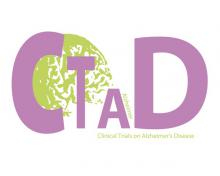Background: The use of magnetic resonance imaging (MRI) derived functional cross-sectional area (FCSA) and intramuscular adipose tissue (IMAT) to define skeletal muscle quality is of fundamental importance in order to understand aging and inactivity-related loss of muscle mass. Objectives: This study examined factors associated with lower-extremity skeletal muscle quality in healthy, younger, and middle-aged adults. Design: Cross-sectional study. Setting and Participants: Ninety-eight participants (53% female) were classified as younger (20-35 years, n=50) or middle-aged (50-65 years, n=48) as well as sedentary (≤1 day per week) or active (≥3 days per week) on self-reported concurrent exercise (aerobic and resistance). Measurements: All participants wore an accelerometer for seven days, recorded a three-day food diary, and participated in magnetic resonance imaging (MRI) of the lower limbs. Muscle cross-sectional area (CSA) was determined by tracing the knee extensors (KE) and plantar flexors, while muscle quality was established through the determination of FCSA and IMAT via color thresholding. Results: One-way analysis of variance and stepwise regression models were performed to predict FCSA and IMAT. KE-IMAT (cm2 ) was significantly higher among sedentary (3.74 ± 1.93) vs. active (1.85 ± 0.56) and middle-aged (3.14 ± 2.05) vs. younger (2.74 ± 1.25) (p < 0.05). Protein intake (g•kg•day-1) was significantly higher in active (1.63 ± 0.55) vs. sedentary (1.19 ± 0.40) (p < 0.05). Sex, age, concurrent exercise training status, and protein intake were significant predictors of KE FCSA (R2 = 0.71, p < 0.01), while concurrent exercise training status and light physical activity predicted 33% of the variance in KE IMAT (p < 0.01). Conclusion: Concurrent exercise training, dietary protein intake, and light physical activity are significant determinants of skeletal muscle health and require further investigation to mitigate aging and inactivity-related loss of muscle quality. Key words: Protein, functional CSA, IMAT, physical activity, aging.
(1) N.D. Dicks, C.J. Kotarsky, K.A. Trautman, A.M. Barry, J.F. Keith, S. Mitchell, W. Byun, S.N. Stastny, K.J. Hackney, J Frailty Aging 2019;in press



